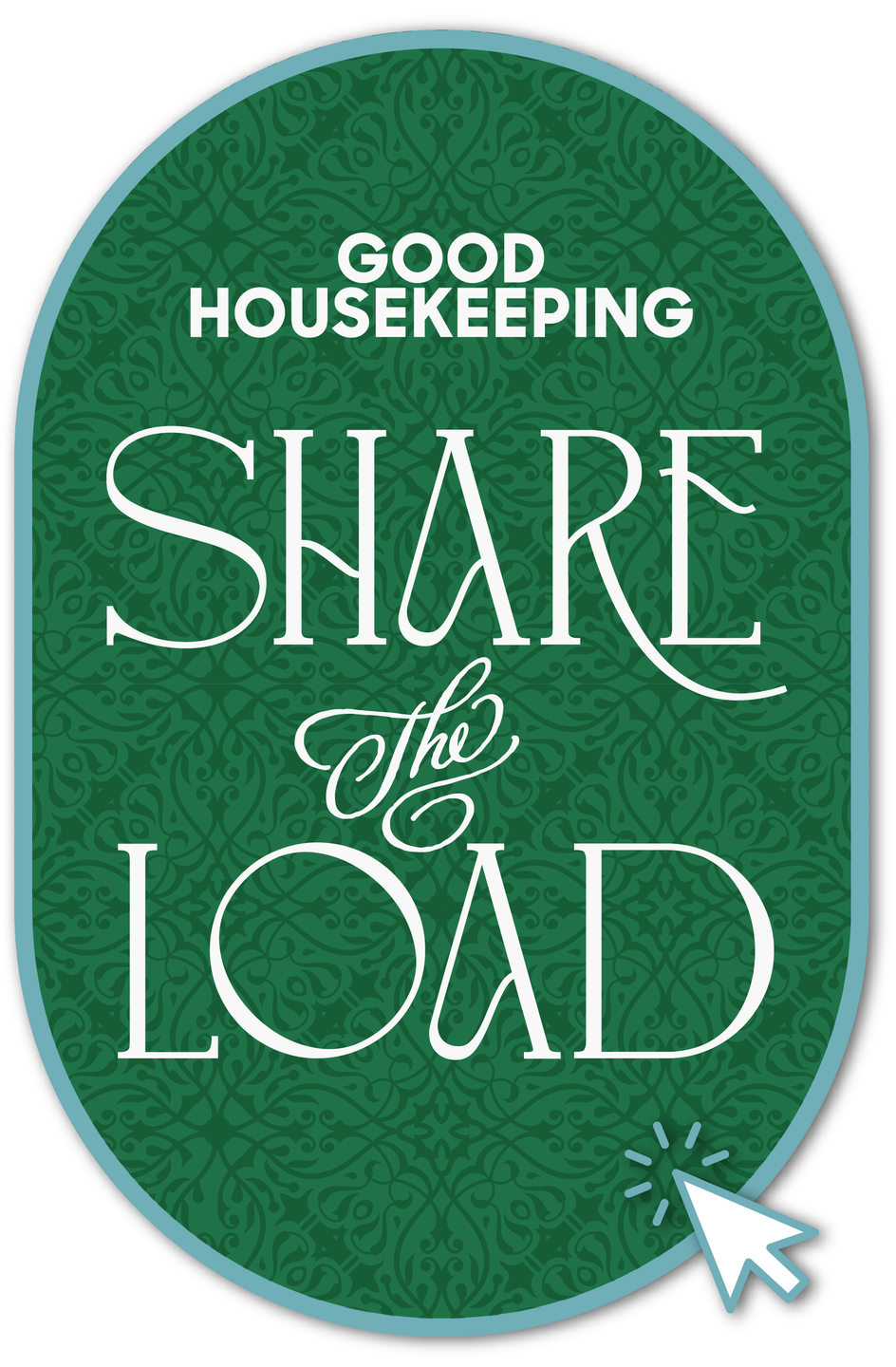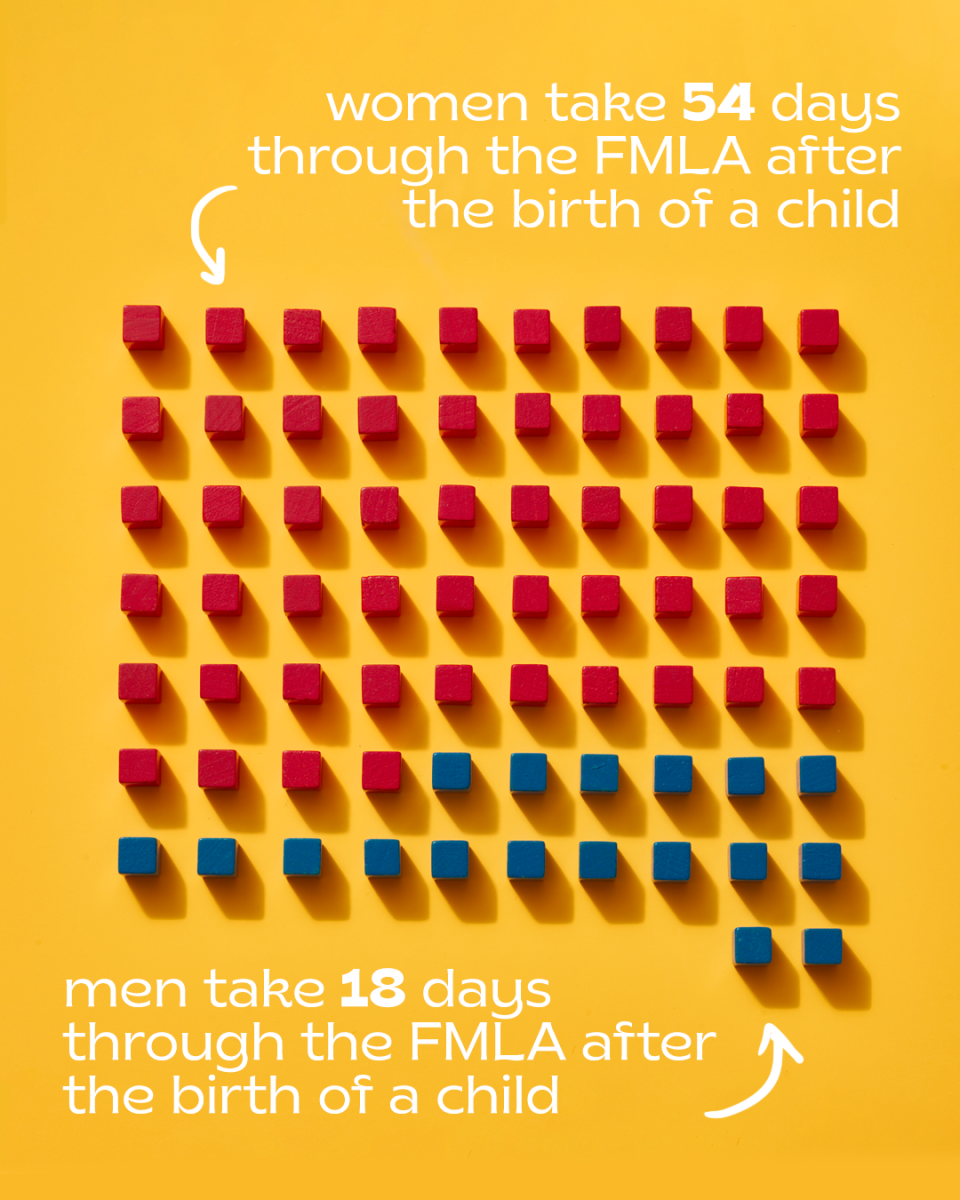Why Are We Still Assuming There‘s a ”Primary” Parent at Home?

"Hearst Magazines and Yahoo may earn commission or revenue on some items through these links."

When my daughter was in kindergarten, that first, disrupted academic year after schools closed for the pandemic, I was excited that I found a pretty good after-school program for her. It was outdoors. It was affordable. It let her run around, but also included creative activities. Best of all, her best friend was already enrolled.
My excitement dwindled, though, when I went to the electronic sign-up form: In the field for contact information, there was room for only one name and email. My husband, Jesse, and I try to share parenting responsibilities equally (ish). At the time, it varied by day of the week which one of us was more available for pickup or emergencies. Neither of us wanted to be The Sole Keeper of the After-School Knowledge, the Chosen One who was informed if it was canceled due to rain.
So, in the field that asked for the parent’s name, I put us in as “Marisa Jesse.” I did a similar mash-up for our last names, emails and phone numbers. After I hit send, I reached out to the program to explain why I did it that way and ask that we both be added to the contact list. Still, when the email went out with all the details about the first day, I was the only one who received it.
Never mind that it’s nearly 2024, and all forms should have room for parents, stepparents, grandparents, babysitters and other caregivers. It’s just that even in families like mine, one that strives to be 50/50 when it comes to child care, we’re still running up against this myth of a “primary” parent — the one who’s on call for every midday class party, after-school pick-up and sports practice; the one who schedules the appointments and retains all the information conveyed during said appointments; the one who’s the go-to for birthday invites and RSVPs and basically everything else. Trying to divide those duties when much of the information is funneled to one person involves lots of work-arounds, systems, tweaks to those systems, check-ins and lots and lots of emails to the daycare complaining that, yes, the baby has two parents and, yes, they both need to be contacted when she vomits in the middle of circle time. (Or was that just me?)
This is not an admonishment that one partner or the other step up and do their fair share, though we all know who that partner would be: Pew research reports that in opposite-sex marriages, even in “egalitarian” couples where both partners earn roughly the same salary, women still spend two hours more each week on caregiving, while men spend three and a half more hours each week on leisure activities. And this is not a call for every family to strive toward equal parenting — some families are better suited for other arrangements. But the big question is: For those families who want to share parenting equally, why is it still so hard?
“These narratives about how men are the breadwinners and women are the caregivers are very, very powerful,” says Brigid Schulte, director of the Better Life Lab at New America and author of Overwhelmed. “So many people think they’re outdated, or that we’ve outgrown them, but they run deep and they impact not only our attitudes and how we think, but our behaviors and how we make our choices.”
It is possible to try to even out the score, but families are running up against deep policy, workplace and social norms that continue to maintain the default of a “primary” parent. So, why are we still here?
The Idea of a “Primary Parent” Starts in Infancy, If Not Sooner
The United States is still one of a handful of countries with no federal paid family leave, so parents are at the mercy of what their states and workplaces will offer them beyond the unpaid Family and Medical Leave Act (FMLA), which covers only around 60% of workers anyway. This starts opposite-sex parents out on unequal footing right off the bat: On average, women take 54 days through the FMLA after the birth of a child, while men take only 18 days, according to a report by the United States Department of Labor.

Some of the leave disparity is due to workplace policies, with men mostly being offered less time as a rule, and some is societal, with dads being pressured not to take leave even if it is offered without suffering a hit to their careers. But mostly, the reasoning is that families can’t lose that income, says Brad Harrington, Ed.D., executive director of Boston College’s Center for Work and Family. “Even going back to 2013, when we first studied paternity leave, fathers told us, ‘I would take leave if it was offered to me, but I’d have to get at least 80% or more of my pay in order to be able to take advantage of it,” he says. “And a lot of states, especially for people in higher-paying jobs, aren’t coming close to that.” With no universal health care or federally funded affordable child care, either, when a new baby (and all the expenses that come with it) enters a family, parents simply can’t afford to have both parents take leave — and usually Mom stays home.
In same-sex couples, these policies could have an even greater effect on shaping family life. “Workplace leave policies might even impact a couple’s decision-making around who even becomes the biological parent,” says Abbie Goldberg, Ph.D., a professor in the department of psychology at Clark University who studies diverse families, including LGBTQ-parent families and adoptive-parent families. “Couples might say, ‘Well, you have the better leave policy,’ or, ‘You have a more flexible schedule. Maybe it’s easier if you’re the biological mother.’ And then you’re the one who’s staying home more now. And you’re the one who’s doing more child care and breastfeeding. And then you’re the one who goes down to part-time, and so those roles start to get increasingly specialized, but there are these external pressures that created those divisions in the first place.”
Some workplaces have tried to skirt the disparity between moms and dads by offering longer leaves to a designated “primary parent” without specifying a gender. More egalitarian leaves would offer a set amount of weeks for bonding time, and maybe short-term disability would give a little extra time to birthing parents.
Other companies, though, would offer a longer leave time for “primary” parents — and it was up to couples to decide who the primary parent was — and a shorter amount of time for non-primary parents. “Some of the companies in our study did it that way,” Harrington says. “When we presented the results back to them, we said, ‘You may not have intended to be discriminatory, but zero percent of women said that they were the secondary caregiver. All of them said they were the primary.’”
But what happens when one parent — typically the mother — gets more time at home with the baby than the other? That parent gets more hands-on experience and practice in caregiving. They’re better at changing diapers, they’re more confident in their baby-wrangling techniques, they figure out what kind of bounce soothes the baby quickest, they’re faster at putting the baby back to sleep and they’re the one that the baby reaches for when it gets upset. And that starts a cycle where, the next time the baby cries, the less experienced parent might say, “You handle this — you’re better at it,” which robs them of experience and the practice they need to catch up.
Parents have to be intentional if they want to disrupt this cycle. “We coined a term called the Freedom Shift,” says Kevin Seldon, creator of Dad I’d Like to Friend (the DILF Podcast), one of the top ten on Apple’s list of most popular parenting podcasts. Seldon explains that whoever is on the Freedom Shift has no caregiving responsibilities during that time — in fact, it’s better if they butt out entirely. “My wife’s freedom shift was from 7 p.m. to 6 a.m., which is quite a long time,” he says. “Obviously a lot of the time my baby would be sleeping, but if the baby woke up, my wife could go back to bed. She could put in earplugs, she could take a bath, she could go out to dinner with a girlfriend. And I got to learn how to put my baby back to sleep.” Seldon says having the solo space and opportunity to find his own way of doing things — even if it was in the middle of the night — was invaluable during that new-baby phase, and eventually he had to work hard to afford his wife the same because he was the one who was better at soothing.

Parenting Patterns Are Too Hard to Break
But if couples aren’t deliberate about it, those roles that established themselves in those first, early weeks can actually be hard to change later on. Jaclyn Wong, Ph.D., an assistant professor at the University of South Carolina and the author of Equal Partners?, studied 21 opposite-gender, dual-professional couples over a period of six years during her book research. Some of these couples she calls “tending traditional” couples, who didn’t set out to have 50/50 relationships or primary parenthood status when it came to caregiving, but were open to one partner taking on more parenting duties at first. “Nobody in my study set out saying ‘I wanna be a stay-at-home mom, and he wants to be the sole breadwinner in our family,’” she says. “Instead they said, ‘We both have professional goals, and in the future we would love the idea of being equal parents, but we’re comfortable with the idea that one of us is going scale back our careers a little bit more at first, and maybe we’re gonna trade off over time.’”
What happened? The trade-off never came. “What the tending traditional couples experienced — to their own surprise — was that they got stuck in that arrangement that neither of them really wanted to begin with,” she says. The partner who put more effort into their career — usually the dad — found it hard to give up the status, pay and benefits they’d earned. And the one that had taken a break found it hard to get back into the workplace, or wouldn’t be able to match their partner’s salary due to having fewer years of experience. Wong says this eventually contributed to some breakups and divorces, and there was greater relationship satisfaction in the couples who she calls the “consistent compromisers,” who tried to keep things roughly equal throughout.
Better relationships and more family time has a domino effect on parental mental health. And the partners in a marriage aren’t the only ones who benefit from time at home in those early weeks, either. There are advantages for kids too: One study looked at the relationships with 9-year-olds and their fathers; even after almost a decade, the kids of dads who took at least two weeks of paternity leave reported being closer to their fathers than the kids whose dads didn’t take any time at all. A 2023 study out of the University of Leeds confirms that, noting that paternal engagement in the first year of parenthood has a positive effect on the parent/child relationship through age 11.
And yet, despite these nods to the bigger picture, we still don’t have national paid leave, even though it could shift feelings about “primary” parenthood. “In other countries they have public policies that support and sustain families and family life,” Schulte says. “And research out of Iceland and Norway shows that when they had these use-it-or-lose-it policies, then the norms around parenthood started to change.” In Iceland, for example, studies show that, after paternity leave was increased to three months, parents started dividing child care more equally, and teens and preteens found it easier to talk with their fathers. In 2021, Iceland increased paternity leave again, and now dads can take up to six months.

Ideas About “Primary” Parents Remain Deeply Entrenched
State and federal policies and workplaces are notoriously slow to change, but they’re not the only ones keeping the myth of the “primary” parent alive. Even though we’d like to think that, as a society, we’re getting better about seeing parents as equal partners, we may not be as far along as we think.
“My daughter is a high schooler, and I called her in sick a couple months ago,” says Shannon Carpenter, father of three and author of The Ultimate Stay-at-Home Dad. “And then I went upstairs, where my wife was working from home, and 10 minutes later the school called her to confirm it.” Never mind that Carpenter is the one who takes the kids to all their doctors’ appointments, and he has his doubts their kids’ pediatrician even knows what his wife looks like. “It’s hard to get past people’s biases,” he says. “And I say this as a white dude from Missouri.”
Those entrenched ideas we have about who the “primary” parent might be run through bandwidth-challenged schools and doctors’ offices, true, but also social networks. In his studies on fathers, Harrington says it’s the stay-at-home dads who had the weakest social ties and the least emotional support. He’s heard from dads who got the cold-shoulder even from other parents. “If dads were allowed to attend the playgroup, they’d say, ‘We’d hear the moms talking and setting up a lunch or a playdate afterward, and we’d never, ever get invited,’” he says.
Goldberg says she’s heard the same from two-dad families, who often feel shut out of school communities. “There are so many of these gendered identifiers in so many of these school-related parental roles,” Goldberg says. “Think of things like ‘Room Moms,’ for example. In that way, many gay dads feel like, even in informal environments like that, they’re kind of forced out. But whether we’re talking about a straight couple or a lesbian couple or a gay couple, we have ideas about sort of what things go together, and they go together in gendered ways.”
Eventually, it reaches a point where those who aren’t assumed to be the “primary” parent wind up having to do more than 50% just to be considered equal. “You have to be vetted before people start taking you seriously,” Carpenter says. “I had to be proactive to do that. Things like craft time and school carnival, I volunteered for all of those. And usually the jobs that dads get are the physical-labor type of jobs, like running the bounce house or building bookshelves. A couple years ago they gave me the chore of face-painting, and I was like, ‘Heck, yeah!’ I was terrible at it, but at least we were breaking down some barriers. But you have to volunteer all the time, and you have to make small talk and make jokes so they know who you are.”
Wong says that, among her “consistent compromiser” couples, men were also likely to take on more than their fair share. “They tacitly realize that she is having a much harder playing field at work,” she says, “so he needs to step up his work at home. Many of the men did more than 50% of the domestic work, and they were the ones designated for emergency sick kid pickup from daycare. Sometimes we need to put on the framework of equity where we have men just do more of the parenting for now to avoid this primary parent trap.”

Solutions Are Largely Left Up to Individual Families
Whenever I hear stories about outdated forms or daycares that default to only calling moms, I always ask: What did you do? Did you find a way to burn the system to the ground and remake it in a better, more inclusive image? (Who has the time?) And the answer is always a variation on the same: No, we found a work-around.
Goldberg says that LGBTQ families may have more experience advocating for more inclusive changes — getting forms to say “Caregiver 1,” “Caregiver 2” and so on instead of “Mother” and “Father,” for example — but it takes a toll. “They shouldn’t have to do it,” she says. “It’s very emotionally draining to constantly be pointing these things out.”
Even with my own after-school dilemma, I didn’t succeed in getting them to change their one-parent sign-up form. My husband and I just set up email rules that would automatically forward communications from the program (and the school app that only allowed one login per household, and the summer camp that did the same) to both of us. I’ve since heard of families that maintain a separate email address — one that all parents can access — to use for app logins, extracurriculars, sports teams, class lists and birthday-party invites. To that I say: Genius!
Work-arounds abound: Seldon says that, rather than trying to split each parenting duty down the middle, for example, he and his wife divide tasks so that each parent has full ownership over the ones they’re covering. His wife loves T-ball, so hers is the only contact info the T-ball league has, and she’s responsible for all the practices and games. He does the birthday parties, including the RSVPs, getting and wrapping the gifts and the transportation to and from. They track everything in a shared calendar. “It’s not that we share 50/50 responsibilities, it’s that we’re equal parents,” he says. “If everyone finds that balance, it doesn’t need to be half-and-half; it just needs to make sure that neither parent feels overwhelmed and both feel engaged and excited.” Carpenter adds that he has an actual job description, so he knows exactly what he’s responsible for; he and his wife re-evaluate it every year to address the changing needs of his family.
But this all shows that, while the problems egalitarian families face are structural, the solutions are left for each family to figure out for themselves, from scratch, all on their own.
These are individual solutions — but solutions get better and more powerful when they’re spread and improved upon. The Better Life Lab runs the Better Life Lab Experiments, or BLLx, where couples can try out tested strategies to help even the load at home. “We start really, really small,” Schulte says. “One of the first two experiments was, ‘last one out of the bed, makes the bed.’ My husband and I still do that to this day.”
But part of the value of the BLLx is the way they’ve been repeated, changed and tested again. “We’ve had 700 beta testers,” Schulte says. “We’ve brought them together at happy hours or virtual happy hours, and people share their stories. Some people tweak the experiments, and then someone else says, ‘I want to try that too.’ And so that’s the beauty of it — they’re just meant to be suggestions that you can then make work for you and your family.”
The point is that no one reaches 50/50 shared parenthood by default — there are too many forces working against that — so families who want it have to work at it. And while one family is lucky to be able to figure it out on its own, it’s even more powerful if we could find a way to collectivize some of these struggles and help make things easier for each other, at least until the rest of the world catches up.
And the more parents talk about it, the less lonely and isolating the mental load of parenthood is. “One of the things we like to say is there are important individual solutions, but then let’s create community and share them,” Schulte says. “Let’s create more awareness so that people recognize that this is something that all couples are struggling with, and that you’re not alone in this. And that once you’ve got your strategies, then we can work together to raise awareness and fight for some of these bigger changes.”
Photographs: Mike Garten. Prop Styling: Alex Mata. Design: Betsy Farrell. Illustrations: Getty Images (card and instruction manual pattern); Adobe Stock Photo (antique key and laundry basket illustrations).
You Might Also Like

